A spicy stir-fried chicken dish made with boneless chicken pieces, rice cakes (tteokbokki tteok), green cabbage, sweet potato, and other vegetables. It’s a restaurant favorite in Korea that you can easily recreate at home!
What is dakgalbi?
Dakgalbi (닭갈비), or dak galbi, is a spicy stir-fried chicken dish made with boneless chicken pieces, rice cakes (tteokbokki tteok, 떡볶이떡), and some vegetables. Dak means chicken, and galbi means ribs. But, there are no ribs in this dish. Back in the day, pork ribs (dweji galbi) were too expensive for everyday grilling, so a restaurant cook created a similarly flavored dish with chicken instead and called it dakgalbi.
This spicy chicken dish originated in Chuncheon (춘천), a city in Gangwon Province (강원도), in the 1960’s, hence the dish is also known as Chuncheon dakgalbi. During one of my trips to Korea, I took a day trip to Chuncheon with a couple of friends. I always loved this dish I had in Seoul, but I wanted to experience the dish where it was born.
Chuncheon is a small city which is about an hour driving distance from Seoul. It’s a beautiful city with mountains and lakes and numerous dakgalbi restaurants. We went to the famous dakgalbi alley with a high concentration of restaurants. We picked the one that looked busy from the outside. It was past lunch time, but the place was still bustling.
How is it served?
The Chuncheon restaurant we visited had each table equipped with a gas stove and a large round grill pan, which is pretty standard at typical dakgalbi restaurants. We ordered 3 servings. Shortly after, the waitress brought out a tray full of red spicy marinated chicken, freshly cut cabbage, sweet potatoes, and rice cakes. She then dumped everything on to the pan that was being preheated in the middle of the table. The chicken started to sizzle immediately, and the smell was incredible. We had to patiently wait for everything to be cooked through, stirring occasionally.
You can also enjoy this restaurant experience at home with a large skillet and a portable gas stove.
When the rice cakes and sweet potato pieces turn tender, the chicken is also ready. Dakgalbi is usually served with some lettuce leaves and ssamjang. Enjoy it wrapped in lettuce and/or perilla leaves with a dollop of ssamjang. Delicious!!
Typically, dak galbi is not served with rice, but it’s customary to mix in some rice into the leftovers at the end to make fried rice. At restaurants, you have to order the rice separately to do this. But, it’s a must to try!
Dakgalbi ingredients
Chicken: I usually use boneless chicken thighs, but de-boned chicken leg meat is also commonly used for this dish. Dark meat works best for this recipe, but you can certainly use chicken breast if preferred.
Rice cakes: Tteokbokki (spicy stir-fried rice cake) tteok makes this dish very filling and comforting.
Vegetables: The classic vegetables for this dish include green cabbage, goguma (고구마, Korean sweet potato), kkaennip (깻잎, perilla leaves), and scallions. You can substitute Korean sweet potato with other white or orange sweet potato or regular potato.
Dakgalbi sauce: The sauce is made with a few basic Korean staples, such as gochugaru, gochujang, soy sauce, rice wine, sugar, garlic, ginger, etc. It also contains Korean curry powder, which is a powder form of curry sauce mix for curry rice, adds a distinct layer of flavor and a umami boost.
How to make dakgalbi
Once you have the chicken and vegetables cut up, this dakgalbi recipe comes together very quickly. Marinate the chicken in the spicy sauce. Reserve some sauce if you’re going to make fried rice at the end.
Then, you just cook everything up, except perilla leaves and scallions, for a few minutes, stirring occasionally. Lower the heat if the ingredients (especially the rice cakes) stick to the pan and brown too fast. The steam from the vegetables should keep them from sticking to the pan, but you can also add a little bit of water if it gets too dry.
Finally, add the kkaennip and scallion and cook for another 3 to 4 minutes until the rice cake and the sweet potato pieces turn soft. By then the chicken should be cooked through as well.
Cheese dakgalbi
These days, cheese dakgalbi is highly popular. Some restaurant dakgalbi pans in Korea even have a section for cheese. Mozzarella is typical, but you can use pizza blend or any of your favorite cheeses. Use as much as you want! If using, add it with 2 to 3 minutes remaining at the end.
For more Korean cooking inspirations, follow along on YouTube, Pinterest, Twitter, Facebook, and Instagram.
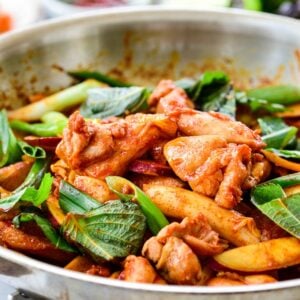
Ingredients
- 1 pound boneless and skinless chicken thighs
- 8 ounces green cabbage
- 1 small Korean sweet potato (goguma 고구마), about 6 ounces
- 8 ounces tteokbokki tteok 떡볶기 떡 (10 to 12 pieces), rice cakes
- 6 - 8 kkaennip (깻잎), perilla leaves
- 2 scallions
- 1/2 cup shredded cheese (mozzarella, pizza blend, etc.) or more to taste -- optional
- green or red leaf lettuce and ssamjang - optional see note
Sauce:
- 2 tablespoons gochugaru, 고추가루 Use 1 to 1.5 TBS for less spicy dish
- 1 tablespoon sugar
- 1 teaspoon Korean curry powder 카레가루 Powder form of curry sauce mix
- 2 tablespoons soy sauce
- 2 tablespoons rice wine
- 1/2 tablespoon corn or oligo syrup (or more sugar)
- 2 tablespoons gochujang, 고추장
- 1 tablespoon minced garlic
- 1 teaspoon grated ginger
- 1 tablespoon sesame oil
Optional fried rice:
- 2 servings cooked rice
- 1 tablespoon dak galbi sauce reserved
- 1 tablespoon sesame oil
- 1 sheet roasted gim (김), dried seaweed sheet
- 1 teaspoon roasted sesame seeds
Instructions
- Soak the rice cakes in cold water for about 20 minutes.
- Mix all the sauce ingredients well in a bowl.
- Cut the chicken into bite size pieces.
- Combine the chicken pieces with the sauce (reserving one tablespoon if you’re going to make fried rice at the end) and marinate while preparing vegetables.
- Cut the sweet potato in half lengthwise and then thinly slice crosswise and slightly diagonally. Cut the cabbage, kkaennip, and scallion into small pieces.
- Heat a pan over medium high heat. You can add a tablespoon of oil if you want, but it should not be necessary. Add the chicken, sweet potatoes, rice cakes, and cabbages. Cook for 5 minutes, stirring occasionally. Lower the heat if the ingredients (especially the rice cakes) stick to the pan and browns too fast. The steam from the vegetables should keep them from sticking to the pan, but you can also add about 1/4 cup of water.
- Add the kkaennip and scallion and cook for another 3 to 4 minutes until the rice cake and the sweet potato pieces turn soft. By then the chicken should be cooked through as well. If using cheese, you can add it in this step with 2 to 3 minutes remaining.
Optional Fried Rice
- Reheat the pan over medium heat with any leftover chicken and vegetables and 1 tablespoon of sesame oil. Add the rice to the pan along with the reserved sauce. Stir constantly until everything is well incorporated and the clumped up rice is broken up, about 5 minutes. You can add a little bit of soy sauce or gochujang if you need more seasoning. Scrape up the flavorful brown bits from the pan while stirring. Tear or crumble the dried seaweed sheet (gim) into small pieces, and stir into the rice. Finish off with the sesame seeds and a drizzle of sesame oil if you want.


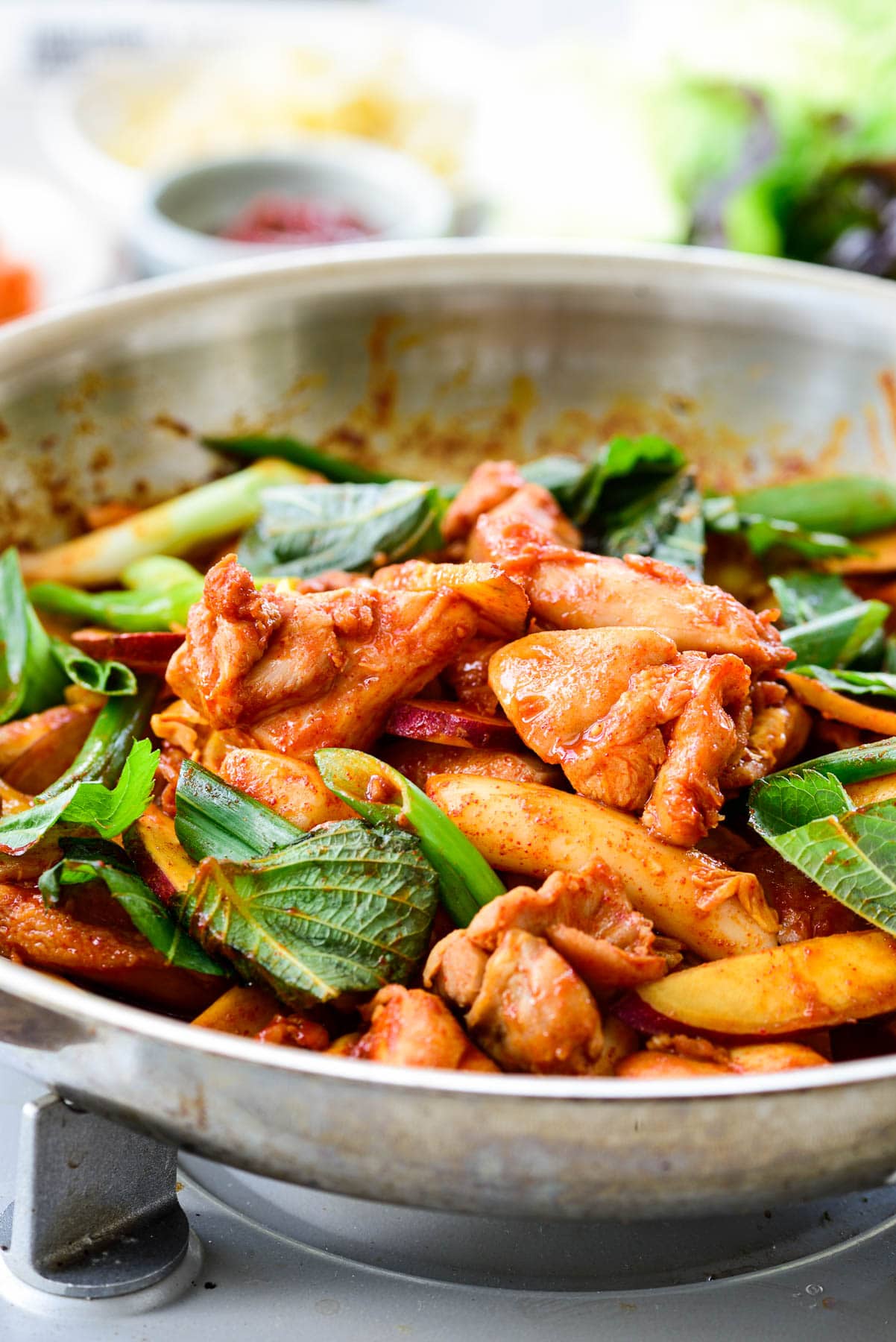
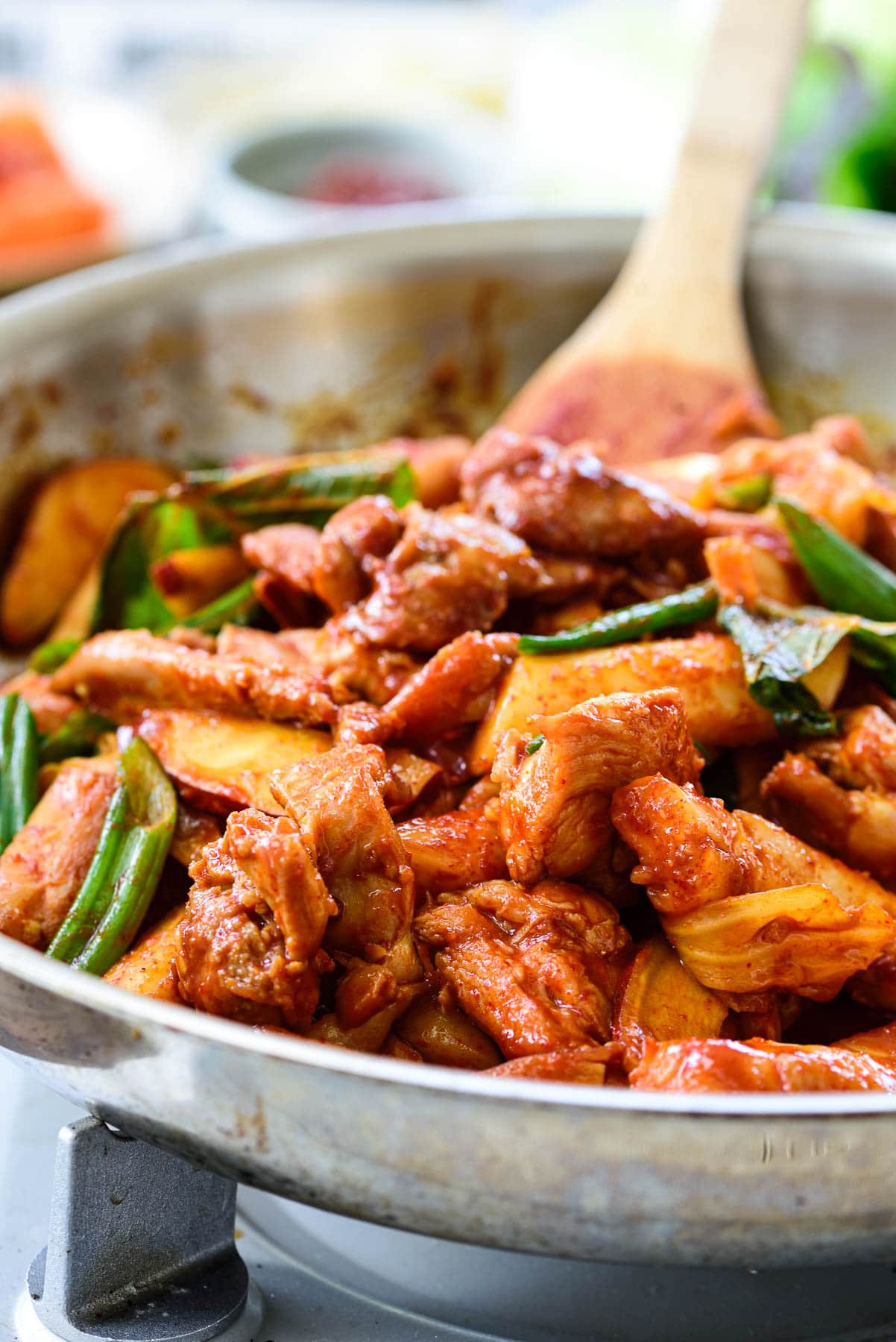
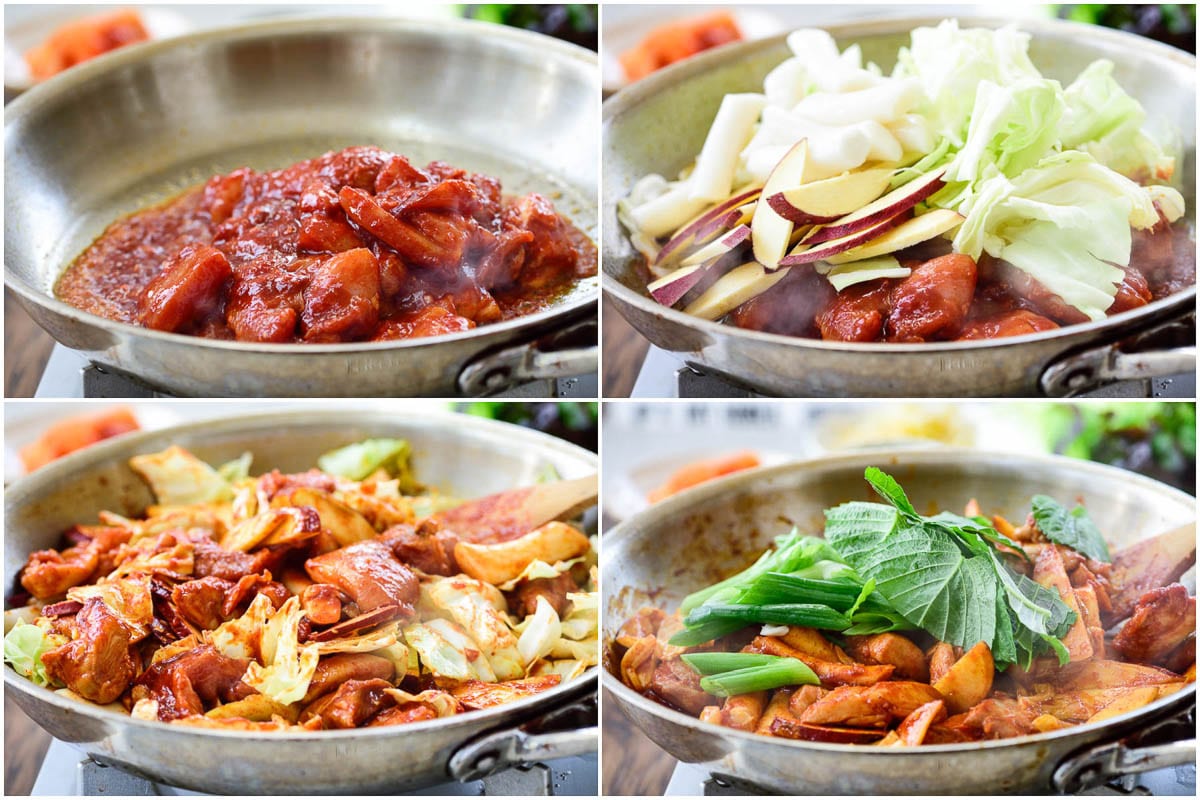
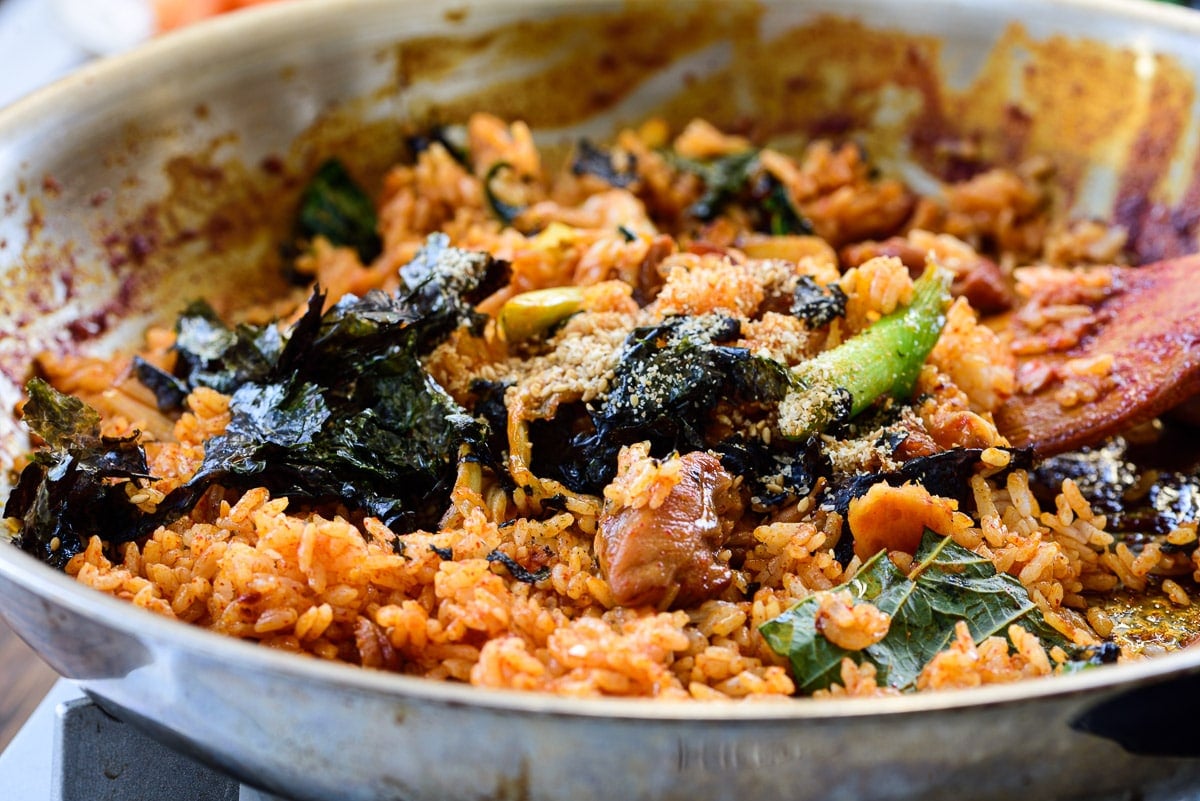
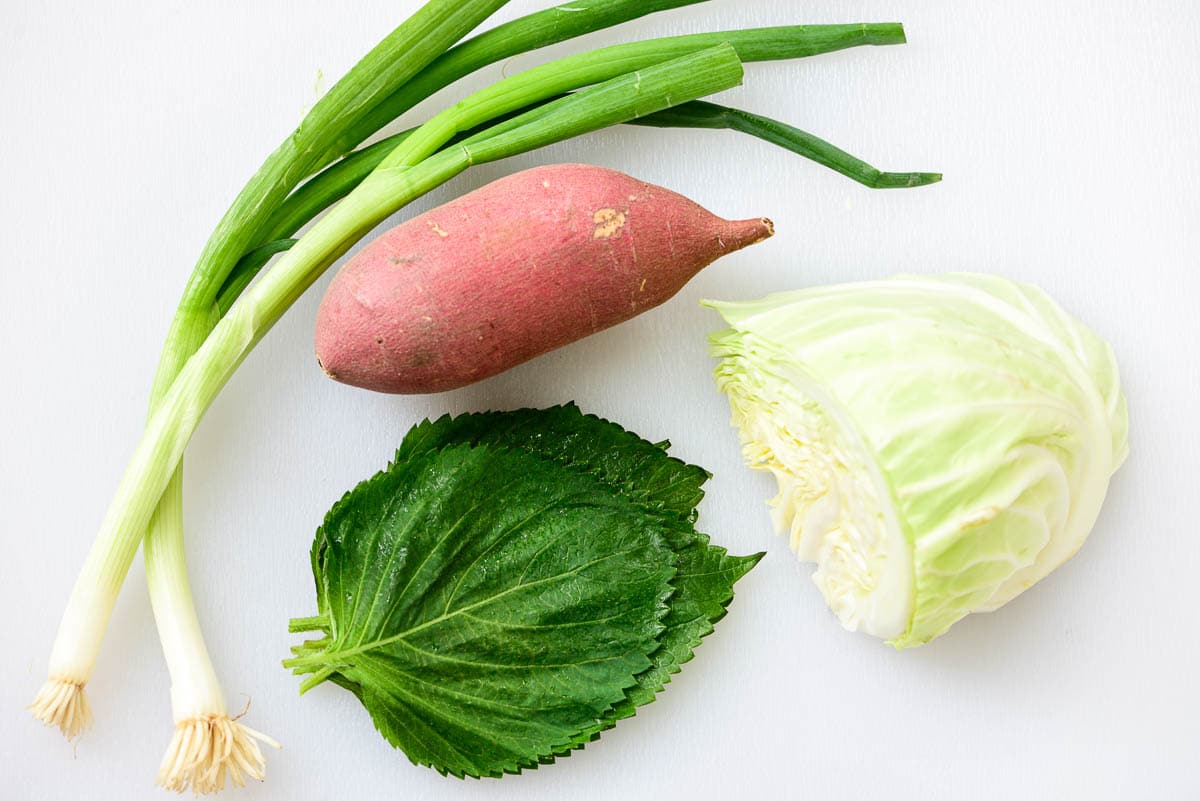
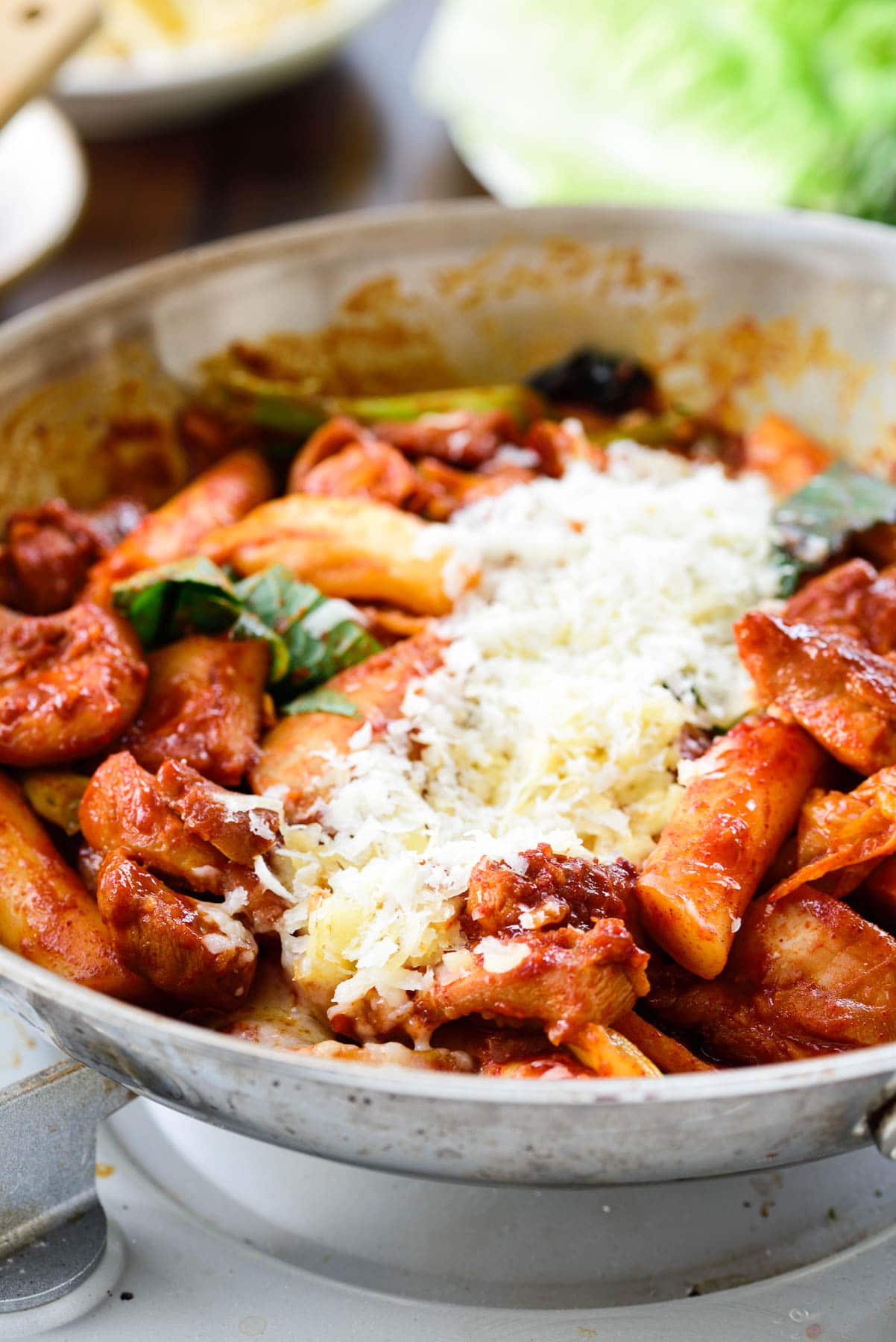
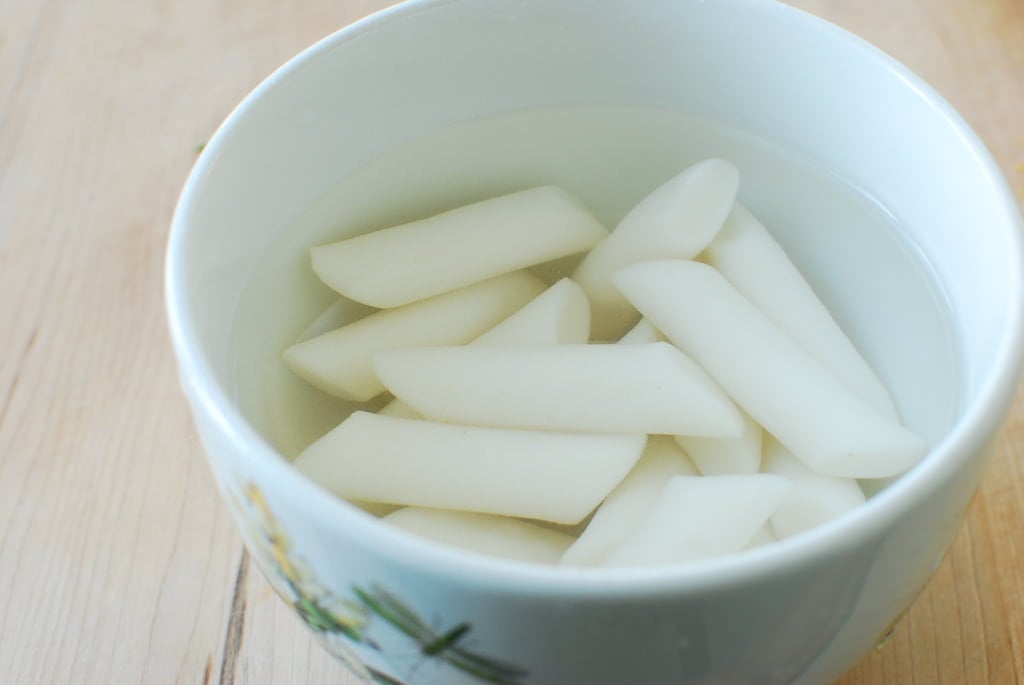
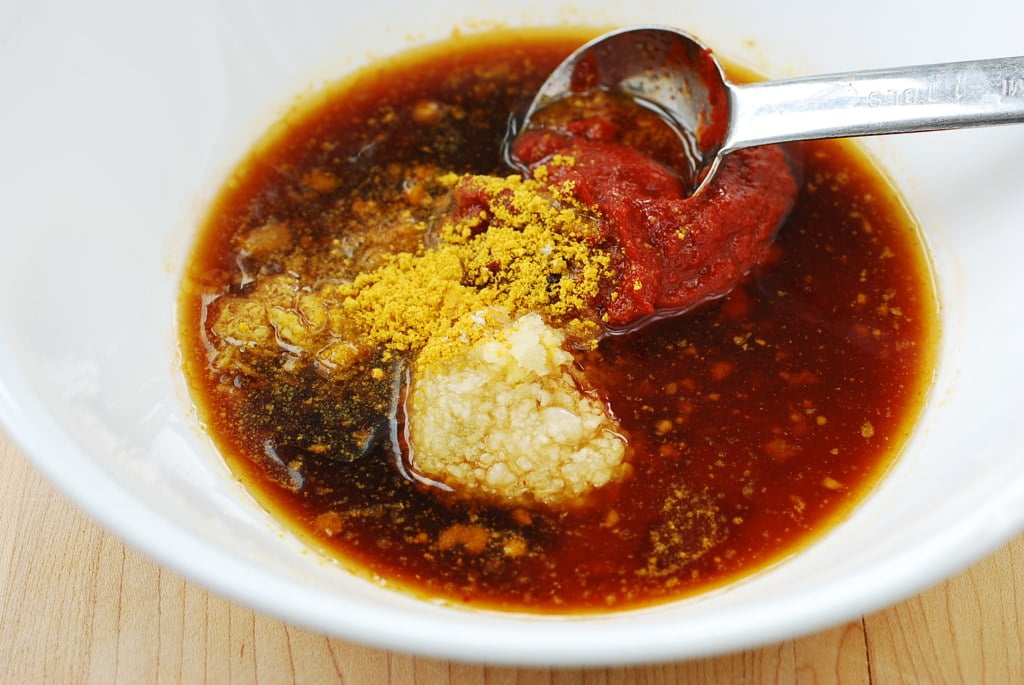
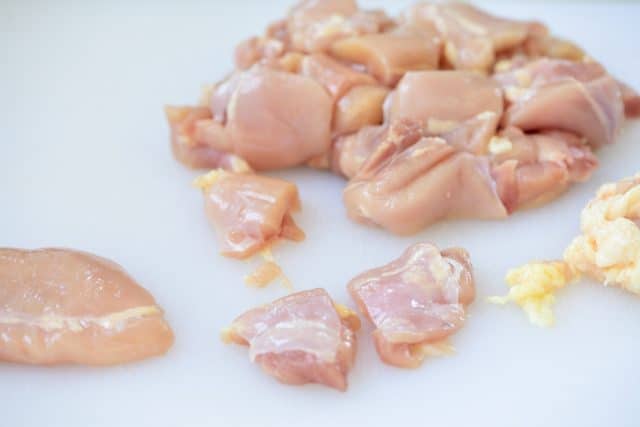
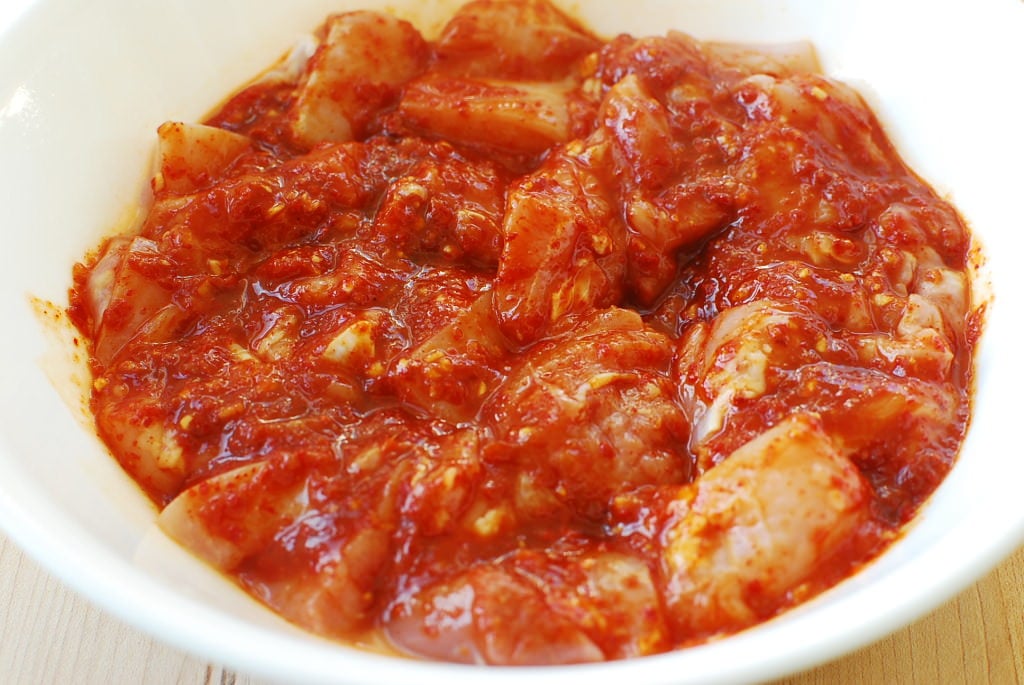
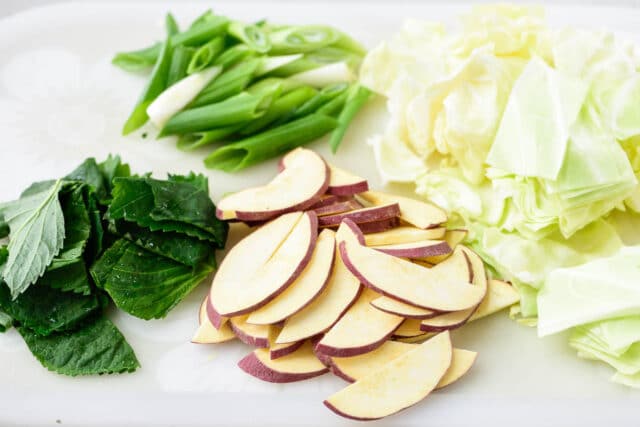
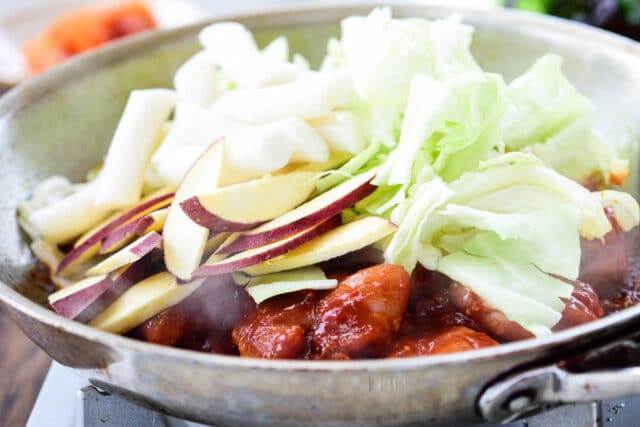
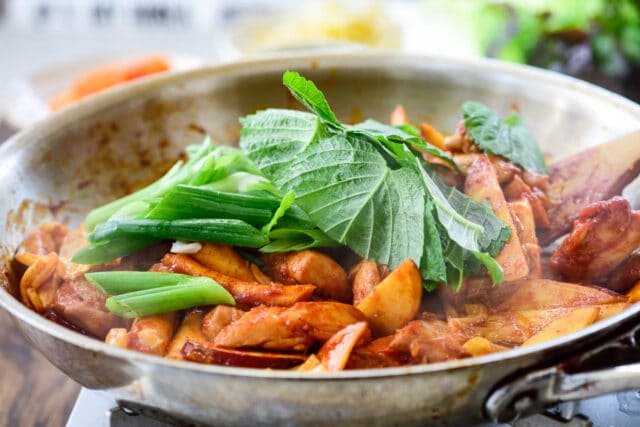
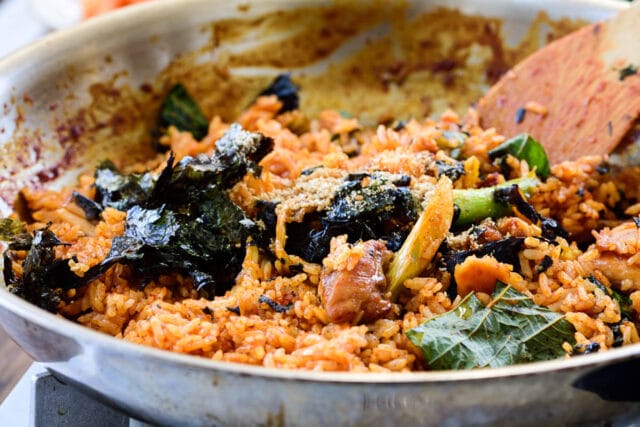
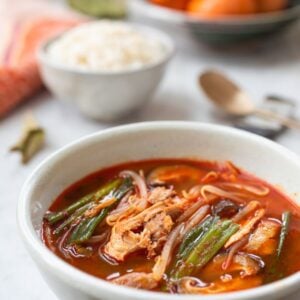
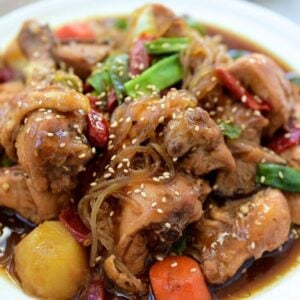
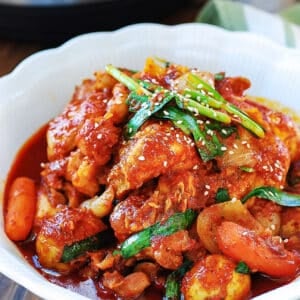
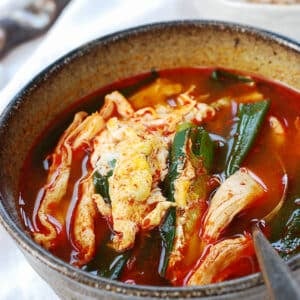













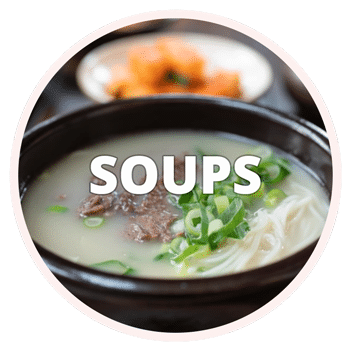
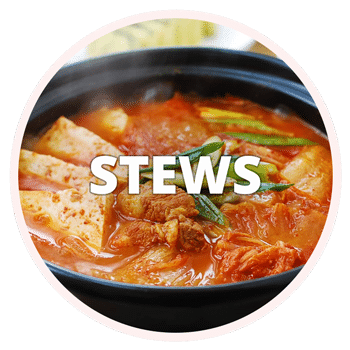


Kira says
Love this recipe, however there was one problem I ran into. Adding the rice cakes, vegetables and chicken at the same time lead to the chicken not cooking through all the way even though it was in small pieces. I ended up taking out everything but the chicken and cooking the chicken by itself until it cooked through. The vegetables and rice cakes are pretty overcooked but it still tastes good. Next time I think I’ll cook the chicken right after marinating and add everything else after it’s fully cooked. Thank you for the tasty recipe!
Carolina Glória says
Just did this recipe for dinner with my parents and it was a success! The only note is that it was a little spicy for our European tastebuds, I substituted the gochugaru for chili powder and added only 1 tsp, don’t know if it’s spicier than gochugaru or if we’re just not used to it. First Korean dish I’ve ever tried and it left me wanting to try more, I’ll definitely be making more recipes from your website, thanks!
Ellen Levy says
Made this tonight for the first time. It’s just lovely! Perfect blend of sweet, hot, garlicky, and nutty. I followed the recipe except for the perilla leaves, for which I substituted about a tablespoon of shiso paste. (Nobody in the entire U.S. seemed to have perilla leaves last week 😉.) Thank you so much—my semi-adventurous kitchen has a new great dinner to whip up! I’ve been using your recipes for awhile—you’ve made everything accessible to this amateur cook. Your work is much appreciated.
Dave A. says
I love this recipe and make it from time to time, but I was wondering if you happened to know how to alter the recipe for Taebaek style dak-galbi. I know it’s a bit more watery, but I can’t remember if the amount of water is the only difference.
Hyosun says
The liquid is the main difference although I’m sure the restaurants use different seasonings as well.
Courtnee Peterson says
I lived in Chuncheon for a couple years, and dakgalbi became my favorite Korean dish almost immediately. It is very possibly my favorite meal of all time! I made it last night for my family, and although it was difficult to get the same scorched taste since I was using an electric stove, the flavor was spot on and it satisfied the craving I’ve had for it since leaving Korea. My husband said it had to be in the top 3 meals I’ve ever made for him. Will absolutely make again. Thank you so much for this recipe!
Rasoop says
I am so excited to make this for my boyfriend. I lived in Korea for about a year. I think I ate at this place in Chuncheon at least every weekend. I LOVED LOVED it. I have been looking online for a recipe and stumbled acrossed your site. The pictures look just like the food I ate in Korea. My question for you, is what kind of lettuce should I use? I am not a fan of Iceberg (tastes watered down) However, the lettuce they used in Korea was awesome. I couldn’t get enough of it. I just don’t know what kind it is. THANK YOU so much for posting this recipe. I can’t wait to try it. I miss the food so much. Your recipe makes it look easy and managable.
Em says
I think this just became one of my favorite recipes! It was SO easy to make and it’s really tasty! This actually was my first experience cooking with rice cakes and now I’m a huge fan. Thank you so much!
NANY says
Hi, I’d love to make this dish, however I don’t have Korean sweet potato or kkaennip (what is it?) and although I love—ermmm—used to love spicy food I am not having any heat anymore for health related issues. IfI ever give in to temptation and swallow one bit of hor food, my body reacts so badly that I can’t bear. What changes and substitutes do you recommend so I can somehow make this dish as close as possible to the recipe. It looks fantastic and I’d love to cook it. Never cooked Korean food before and I’m really interested in learning Korean cuisine…not too spicy at all, if possible. Thank you for sharing.
Hyosun says
You can try to omit gochujang and gochugaru as well as the vegetables you don’t have, but it will be an entirely different dish I must say. Why don’t you try something more simple and mild such as dak bulgogi. https://www.koreanbapsang.com/dak-bulgogi-korean-bbq-chicken/
Lynn says
this recipe is amazing & tastes just how i remember eating it out at restaurants but less greasy (yay!). thank you for creating such a user-friendly, step-by-step recipe that i’ll be sure to repeat many times!
Laura says
I thought your recipe was very good! Even my husband said it was very good! Thank you for sharing your delicious world with me!
Hyosun says
Great to hear that! I just made this when my daughter visited last week. Everyone was very happy eating it. Thanks!
Dianna says
Amazing, I always trust your recipes and this was excellent. When it was almost done I cleared a section in the pan and added a mix of cheddar and mozzarella, just like in Seoul. Made fried brown rice at the end, sooooo good.
Gary Go says
Since our trip to South Korea we’ve been drooling for Dakgalbi we had at Hongdae. Finally, I tried this recipe and my wife said it’s very delicious. Reminds her of our vacation at Korea. Thank you for this. I’ve been an avid follower of your blog.
Marilyn says
This was great! I used honey because I don’t have corn syrup, and cut the salt in half for health reasons, and neither change seemed to cause a problem. My (Korean) husband was like, “Why have we been going to restaurants all this time??” 😀
Hyosun says
Haha that’s great to hear! Honey is a great substitute for corn syrup or vice versa. Thanks!
Jenna Vergauwen says
I was wondering if you have any suggestions for substituting the Korean sweet potato? I want to make this but I’ve never made Korean food before. I also live in the middle of the US so finding the right ingredients is proving difficult.
Wen says
I just made this dish and it was absolutely delicious! Except for the part where the high spice level overwhelmed nearly my entire family. We love spicy food so that was an impressive feat, congratulations! (I put in a medium amount of gochugaru.)
I also didn’t have any kkaennip or rice wine so I have yet to actually know this dish in its’ full glory, but it’s still a dish that I’m willing to try again!
Nandita says
Hi,
Thanks for the recipe. Sounds great! I was wondering about the spicy rice cakes, I’m not sure that’s something I’ve come across at the supermarket in the U.K.
Please can you advise?
Almer Reyhan says
Thank you for making this recipe. I’ve followed your dakgalbi, fried chicken, and kimchi pancake recipes. They are amazing! But this dakgalbi, you need to add salt at the end. Otherwise, amazing recipes as always.
Olivia says
Hi, Hyosun!
I love your recipes! I used to have absolutely NO interest in cooking but thanks to your website, I want to cook something different every week and every recipe of yours I’ve tried has come out great! I’m thinking of making this for my family, but my mom doesn’t eat spicy food too well. She can handle a medium amount of heat, and I’m thinking the cheese will cancel out most of it, but the best way to make it less spicy would be just to put less gochujang, right? Sorry if it’s an obvious question and thanks!!
Hyosun says
Hi Olivia – Wow so good to know my recipes are inspiring you to cook more! Actually the best way is to reduce the gochugaru (red chili pepper flakes), which is actually the primary source of heat. You would want to keep the gochujang for the flavor and the salt level. Yes, adding cheese will help as well. Thank you, and let me know how it turns out for you and your mom.
Yalanda says
As an American living and teaching in Korea for more than a year, I’ve developed quite a taste for so many Korean dishes. I absolutely love to cook, but for some reason haven’t tried cooking any Korean dishes since we moved here until very recently…using two of your recipes. I am happy to say this is spot on! It tastes just like our favorite Dak Galbi restaurant, if I do say so myself:) Thank you for sharing these easy to follow recipes!
Hyosun says
Oh nice you’re in Korea. Sounds like you’re really enjoying Korean dishes. I am glad you started to cook on your own as well, and I am happy to be helpful. Thanks for the nice words!
Melody says
Hi there! This dish looks amazing! I just have a question, can I substitute the rice wine with rice wine vinegar? Or something else maybe?
Thank you!
Hyosun says
You can use white wine if you have any, or omit it. No vinegar.
J-Dan says
Sake is an excellent substitute for mirin/rice wine. Because this recipe uses sugar, the slightly dryer nature of sake will work perfectly.
Hyosun says
Yep! Thanks!
sloanie says
Just a question about the Korean curry powder. In all the shopping for Korean ingredients that I’ve done, I haven’t come across anything called 카레가루 packaged as a stand-alone spice in a form like 고추가루. The only thing I could find at my nearby Korean market was the curry powder that is a mix for making curry rice (오뚜기 카레). I do have some Simply Organic brand curry powder that has a very similar flavor to that of Korean curry– I just wondered what specifically you use or recommended for the curry powder in this dish. (I know it’s optional but my instinct is that it’s one of the ingredients that gives this dish such a unique flavor compared to 돼지불고기 and other spicy Korean dishes that I love.)
And thanks for creating this site– so far I’ve only tried making the spicy shrimp but they turned out really well, and it’s really really hard to find a Korean restaurant where I live that makes really good 돼지불고기 or 닭갈비, so I’m excited to try making your recipes for these and more!
Charles Dake says
I made this several weeks ago for my family and, while tasting good, there was something missing that turned me off from the dish. But since then and after moving into my new apartment for summer school, I remade the dish; this time making sure to get all the right ingredients. Then after a remarkably short prep and marinade, it came out to delicious results. I am completely grateful to you for sharing this recipe and your culinary knowledge with me. I have always loved Korean food and longed to be able to cook it. I am very happy to now have a wide variety of dishes readily available in my bookmarks due to you!
Questions:
In my area I have not been able to find any perilla leaves. How important are they to this dish and Korean food in general? Do you have any suggestions on how to get them? I used mint as substitute and it really stuck out awkwardly. Also I used my local variety of sweet potatoes instead of Korean. I actually really liked this substitution ( though I do not have memory of Korean Sweet Potatoes to compare ) and I realized how important it is to slice them thinly. I would either have a delicious and tender slice or a thicker and harder one. Another thing is I really enjoy spicy food. This is one reason why I enjoy Korean food so much as it seems so naturally conducive to spice. What would you recommend in raising the heat profile?
Hyosun says
Sorry for the late reply. I just realized I had missed your comment. I am glad you tried it again with the right ingredients, and it came out delicious for you. Perilla leaves are an important ingredient in Korean cooking. It is a fragrant herb that is widely used also as a vegetable in Korean cuisine. If you can’t find it, you can omit it. Yes, mint will be quite strong in its unique way and not work well with this dish. To increase the heat level, you can use more gochugaru (red chili pepper flakes) or add some sliced fresh hot green or red chili peppers.
shin says
omg i love 닭갈비!!!! i’ve been looking for a restaurant that make this dish but haven’t found one yet. Thank you for sharing this recipe! I’ll definitely try this at home~
btw, I love your site! Full of amazing korean food….I’m a HUGE KFOOD LOVER! hehe
bookmarked!
Hyosun says
Thank you! Hope you make it soon.